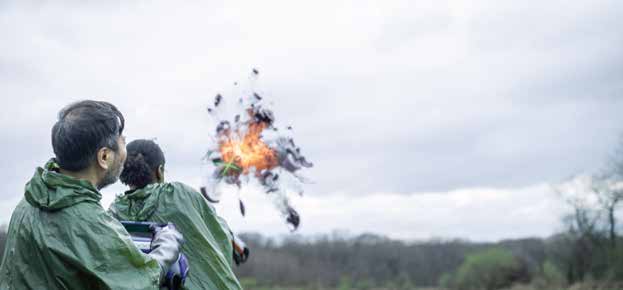By Kirsten Coachman
In StudioX, collaboration is the name of the game.
StudioX, Academy of Art University’s top-tier VFX production studio, housed within the School of Animation & Visual Effects (ANM), offers students the opportunity to gain hands-on experience working on real-world projects through its series of courses. Previous film projects StudioX has worked on include the Oscar-nominated “Beasts of the Southern Wild” and “Theeb,” as well as Ryan Coogler’s “Fruitvale Station,” “Strawberry Mansion,” and “Omni Loop.” Film projects featuring StudioX students’ work have been screened at several prestigious film festivals, including the Sundance Film Festival, the Tribeca Film Festival, the South by Southwest Film Festival, and the Toronto International Film Festival.
In their latest collaborative project, “2389: Coming Home,” written, directed, and produced by Ukrainian filmmaker and environmentalist Kateryna Sazonova, the teamwork and capability of Academy of Art University’s StudioX are on full display.
“There are lots of people involved with different tasks when you have 3D. I think this project is a really good example of how we work together, even though they’re different classes, but we work as one studio,” said 3D ANM Director Catherine Tate. “I’m really proud of that because it’s not an easy thing to do.”
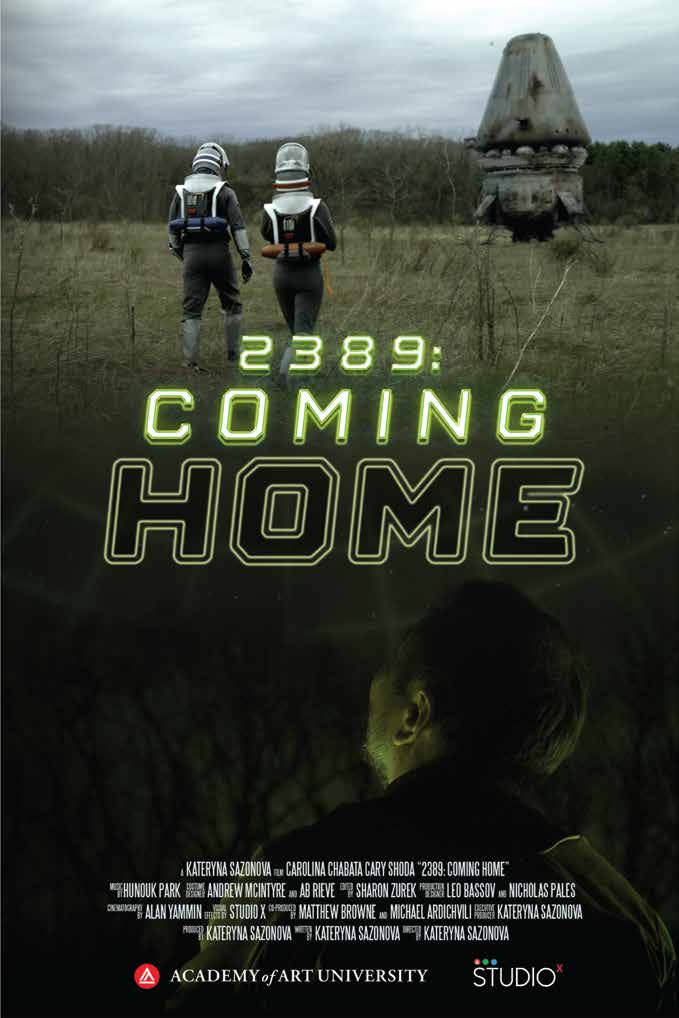
There’s a unique camaraderie that the students in StudioX form while working on projects. VFX Producer Stephanie Nieves (M.F.A. ’24) and Compositing Lead Sorraya Brashear-Evans (M.F.A. ’25) cite being part of StudioX as a major highlight while studying at the Academy.
“Everybody wants to see each other succeed, and I truly think that’s been my favorite experience since being at the Academy,” said Brashear-Evans. “I am proud to say that I’ve made lifelong friends and colleagues.”
“It’s been the most fun I’ve had at the Academy,” said Nieves.
Currently on the festival circuit, “2389: Coming Home” is centered on a scientist and a soldier from a colony on Mars who come to Earth to research the possibility of it being inhabitable once again following fallout from a previous disastrous climate crisis.
“I’ve been into environmental activism since about 2017. And my other films involved climate change and other problems on sustainability,” explained Sazonova in a promotional interview. “When the time came for me to choose the topic of my thesis film for my M.F.A. at Columbia College Chicago, I knew what I wanted to talk about.”
StudioX was invited to join the project during the film’s pre-production.
“‘2389: Coming Home’ is a VFX-heavy project, so I knew from the very beginning that I needed a very strong VFX partner to pull it off,” said Sazonova. “And luckily, StudioX came on board as my VFX partner from the early stages of pre-production.”
During pre-production, StudioX and Sazonova discussed each shot that had VFX elements.
“We needed to make sure that whatever I envisioned was possible for the VFX team to realize,” said Sazonova.
The StudioX team worked on 41 shots across two years. One of the shots was a drone shot that required multiple passes from different facets of the VFX pipeline.
“What’s really cool about this shot is that we had three classes involved,” explained Tate. “And I know that seems like a lot for a little shot like this, but we had Jason Patnode’s class, the VFX 3D class, create and light, and texture the drone. And then also in Michael Parks’ animation class, they animated the drone. In Jason’s class, they had a dynamics artist who did the explosion. And then we had a compositor who put it all together.”
In addition to Nieves and Brashear-Evans, the StudioX team was led by several student leaders, including Production Managers Kassandra Bravo (B.F.A. ’25), Ryan Molini (M.F.A. ’24), and Cody Gurecki (B.F.A. ’23), VFX Producer Smayaan Marwah (B.F.A. ’24), Associate VFX Supervisors Davis Forge (B.F.A. ’25) and Lashay Riley (M.A. ’22/M.F.A. ’24), Compositing Leads Whitney Chow (M.F.A. ’25), and Cassandra Marzette (M.F.A. ’25).
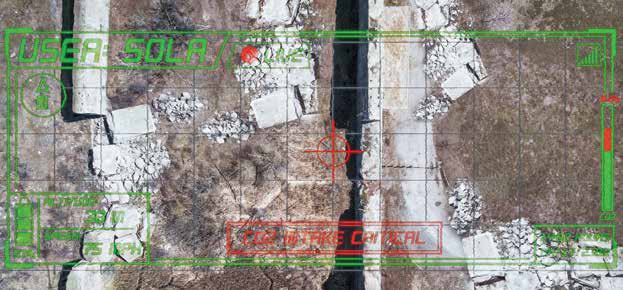

As the VFX Producer for the final six months of working on the film, Nieves served as a liaison between the StudioX team and Sazonova. “I emailed updates to her, gave her shot breakdowns and shot updates, and prepared playlists,” Nieves said of her responsibilities.
Nieves said that Sazonova would visit their class sessions every other week when she could to offer direct feedback to the StudioX team.
“Hearing from the director was very helpful,” said Nieves. “She was very detail-oriented, so it really helped that she was very communicative with us.”
With her studies focused on 3D animation, stepping into the world of VFX proved at first to be a challenge for Nieves. The VFX pipeline, in particular, was something she had to build familiarity with.
“There are a lot of protocols to follow and certain steps that we had to go through,” explained Nieves. “For being the lead for the production, it was kind of daunting, ‘cause I didn’t know much, so I had to learn as I go.”
Nieves shared that typically, as an animator, she works solo—”just do the shot and that’s it. Get feedback, go back to it.” Being the VFX Producer, she had to speak regularly with her fellow StudioX classmates about their processes.
“It did help me get out of my introverted space a bit more,” said Nieves. “I do appreciate the opportunity [to grow] as a person, in a way, and it helped me be a better artist as well.
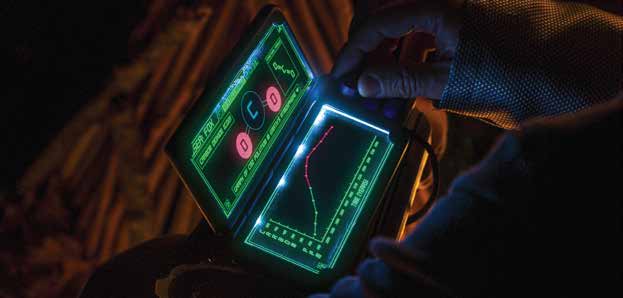
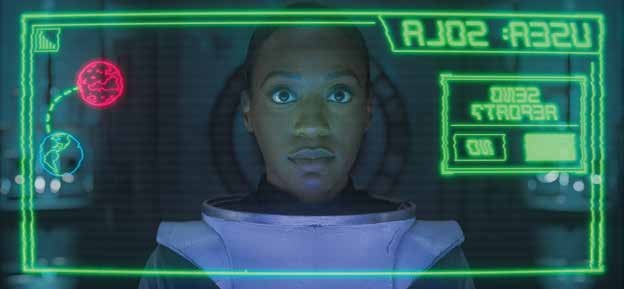
Being one of the Compositing Leads on the project, communication for Brashear-Evans was also key in her leadership role.
“We would have weekly check-ins,” said Brashear-Evans. “We would break down the certain types of effects and then put that per lead. I was working on a lot of the drone shots that involved navigating both the CG department and compositing—just to make sure that all those assets line up, because it was a number of shots that were going to be cut right behind each other.”
Brashear-Evans worked on four compositing shots of her own for the film. Two shots were drone shots containing the 3D asset, and the other two shots allowed for some creative freedom.
“Two of them, I was able to be a little bit more creative and visualize what this space debris would look like,” explained Brashear-Evans. “I got a chance to create my own assets for that and comp them into one or two of the shots that were being worked on.”
A standout moment for the now-Academy alum was the opportunity to “do something different for the studio,” by creating the film’s poster.
“There’s something about just physical media, which in compositing, because it’s all digital, we don’t get a chance to really see things printed out and displayed,” said Brashear-Evans. “So, after creating the poster, just seeing it during the Spring Show last year was amazing. To be able to print it out myself and hang it up—it’s in my office right now—that’s just something special that I didn’t really have the chance to do before.”
